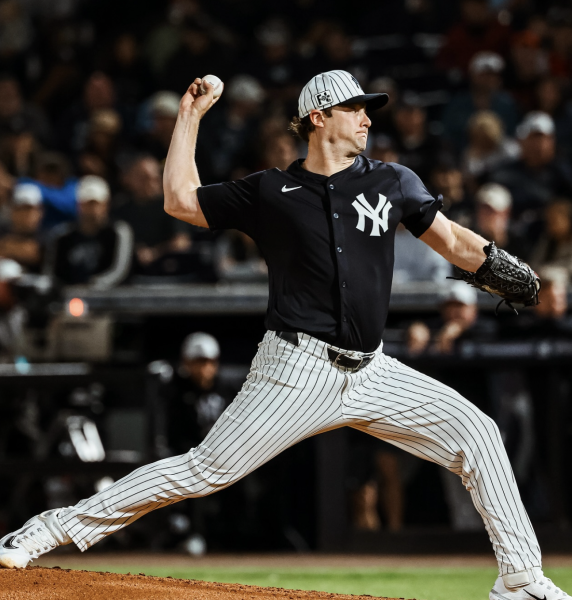I hate bugs.
They are gross, pesky, slimy and some of them manage to ruin my baseball season before it even begins.
This offseason, I have distracted myself from reliving the New York Yankees’ 2024 World Series performance — or lack thereof — by looking ahead toward 2025. Up until last week, I had been optimistic, or at least as optimistic as a Yankees fan in this cursed decade can be. The team had responded well to being shunned by the traitorous Juan Soto, fortifying their pitching rotation and adding a couple of impact bats. Things were looking up.
Then, the Yankees caught the bug — the injury bug. In the past week, reigning American League (AL) rookie of the year starting pitcher Luis Gil was diagnosed with a lat strain in his pitching shoulder, sidelining him for at least six weeks. Veteran designated hitter — and the Yankees’ only competent playoff bat — Giancarlo Stanton came down with severe injuries in both elbows and will begin the season on the injured list.
Worst of all, ace starting pitcher and former AL Cy Young award winner Gerrit Cole fell victim to an elbow injury that will require season-ending Tommy John surgery.
With their two best pitchers and most competent playoff hitter out indefinitely, the Yankees’ realistic path toward a redemption-filled championship season is disintegrating before my eyes.
To put it shortly, I am having a bad day.

But calling the Yankees’ affliction the “injury bug” is a misnomer. For pitchers who throw upwards of 100 mph and hitters that swing the bat at 80 mph, injuries are a feature, not a bug.
It is no coincidence that one-third of current Major League Baseball (MLB) players have undergone Tommy John surgery to repair a torn ulnar collateral ligament (UCL). In fact, I would venture a guess that it is related to the fact that the average velocity of a pitcher has increased by 4 mph — about 5% — in the last 20 years.
The human body is not designed to throw a baseball at that speed, hundreds of times per week.
Further, as effective as the recent introduction of the pitch clock has been in improving the pace of the game, it cannot be beneficial for pitchers to increase the frequency at which they throw a baseball with maximum effort.
Succeeding in the major leagues should not require players to practically guarantee themselves a future trip to an orthopedic surgeon.
On the other side of that coin, it is also not in teams’ best interests to spend inordinate sums of money to acquire ticking time bombs.
Teams must pivot from seeking out pitchers who throw the hardest and hitters who swing the fastest. Perhaps front offices should look to the Tampa Bay Rays, who employ deep bullpens that allow starters to pitch many fewer innings than average per start. Alternatively, they can mimic the Los Angeles Dodgers and roster six or seven starting pitchers instead of the usual five, granting pitchers precious extra rest between starts.
One way or another, players should be discouraged from attempting to increase their maximum velocity at the expense of their health. But players will not slow down — and, in the process, sacrifice millions of dollars — unless the game slows down with them.
That starts with a conscious effort by teams to devalue velocity.
If teams do not act in the way the Rays or Dodgers have, the league must.
As a baseball purist, I would hate to see a league in which pitchers must limit themselves to a certain number of pitches per game or inning. I would shudder at efforts to force pitchers to value pitch location instead of velocity, like a smaller strike zone or a lowered mound. And I would collapse in an inconsolable heap if the season was shortened and I had fewer minutes to spend watching baseball.
But the health of players must come first. If these drastic measures are what it takes for the league to finally shrug off the injury bug, the league must sigh and adopt them.
The injury bug will not exterminate itself, and the league must quash it before it quashes them.